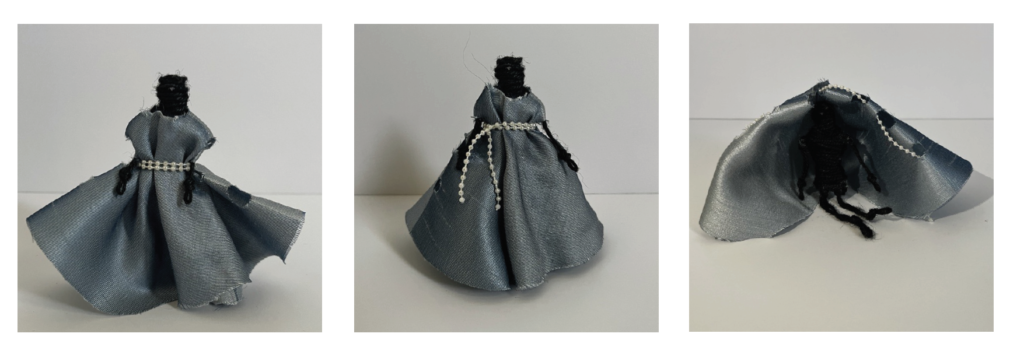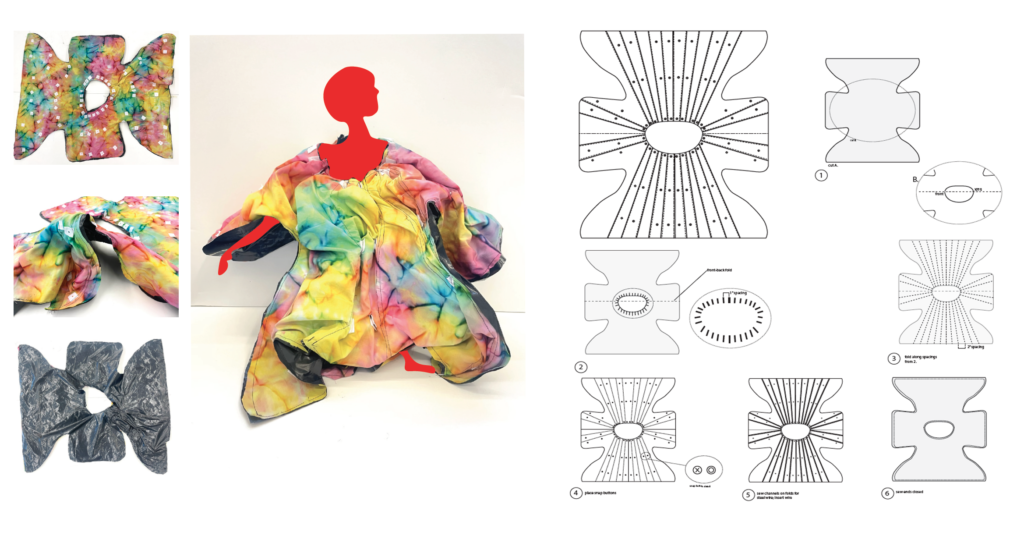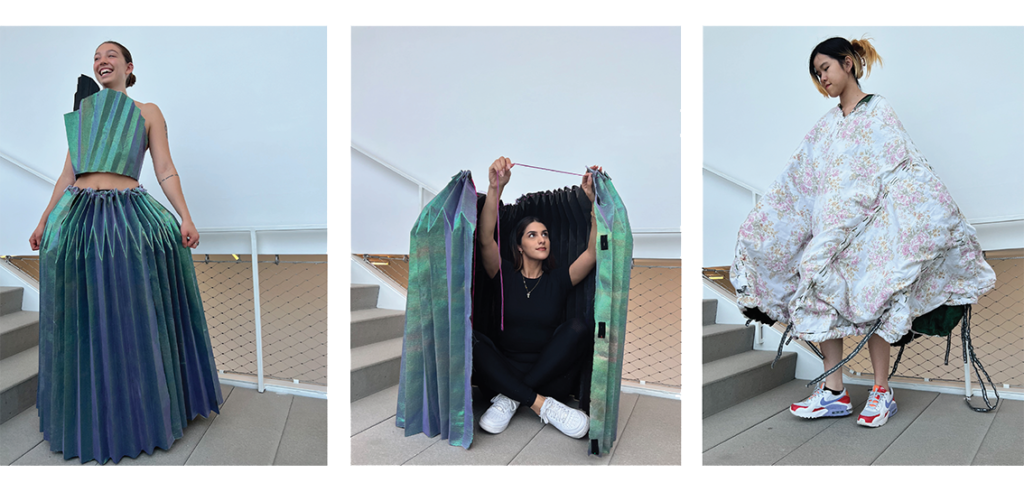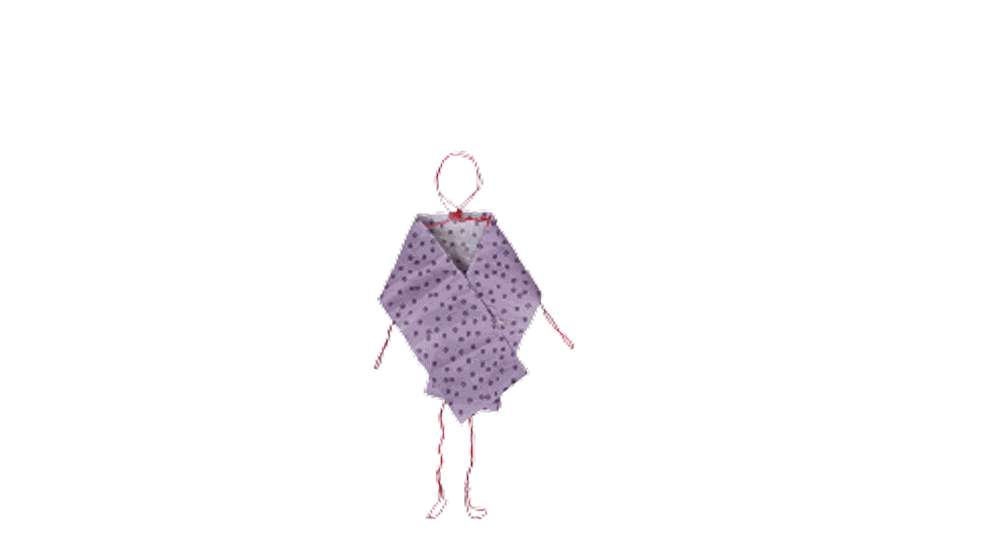

At the center of our project is the question of dignity in relation to design. The thread that connects dignity to design, design to sustainability, sustainability to beauty, beauty to people, and people to dignity —we followed this string of thoughts to a conclusion of second skins, privacy, and community. What we wear and the space we inhabit are perhaps two of the most inherently dignifying material moments in our daily life. The object of this study is to create something from the threads of waste and forgotten joy. Will it be a coat, turns chaise, turns hammock, turns door? With this project, we explore the unlikely supportive quality of fabric and its threads. Dignity is the material that weaves, connects, and stitches humans together, and our dream is for the industries of fashion and construction to take on similar qualities.

The intention of this project is to provide individuals the opportunity to enjoy a beautiful second skin and have moments of privacy in a busy world, while still having the capability to turn their possessions into a means of gathering. These garments will be capable of defining stand-alone spaces, while then connecting into larger-scale sheltering that facilitates community; there is no limit to the combinations that can be created through these amoeba-like pieces. Dignity can be restored to the mundane moments of life and the city through this series of multi-functional, colorful garments. Imagine a patchwork quilt materializing before your eyes: covering the streets of a city, the lobby of an airport, the lawn of a university campus with garments crafted sustainably and intentionally.

During the sixties, Michael Webb from Archigram created some groundbreaking projects with the concept of dwelling capsule or house as a dress. He used plastic and vibrant colors, and they were revolutionary and pop. Two decades later, Toyo Ito designed Pao, also a house that is transported through the city. Our early work and discoveries centered around materiality and form, constantly coming back to the question: “How can the built environment and the clothing we wear become one?” Specifically, we began to hone our focus on materiality into the excess waste produced by the fashion and construction industries. This led us to imagine a project in which we would give a new and dignified life to discarded textiles and construction waste. This revitalization inspires joy, promotes community, and maintains a sense of versatility.

Moving into the fabrication of the project, we explored how to create a garment with the structure and stability of a shelter. With a primary vision of outdoor use, the garments must be weatherproof, resistant to elements, and effective in temperature regulation. It is also incredibly important to us that the garments we create are aesthetically pleasing and exciting—we looked at the challenge of using recycled construction materials as a unique opportunity and means to achieve beauty. We investigated several material, structure, and connection point systems to deliver the promise of this fun and transformable design for dignity. Our greatest struggle in the design and making of this set of garments was establishing enough rigidity to allow the fabric to form shelter while still maintaining fluidity and wear-ability. Looking at different forms of fabric manipulation commonly used in sewing projects, we imagined how these techniques could translate to a larger scale. Eventually, we found pleating and cinching to be most successful when paired with recycled roofing felt as the base material.


Our semester-long investigation of the fashion and architecture intersection yielded three different garment-to-shelter designs, two of which we produced a 1:1 prototype for. Recording the process from beginning to end, you can see the evolution of our understanding of dignity and joy.
Houston, May 9, 2023

